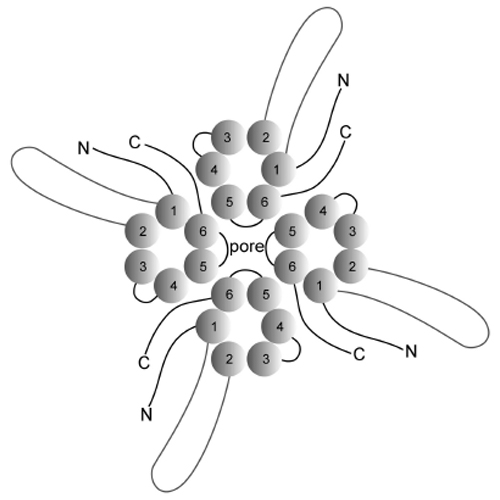Role of TRPML and Two-Pore Channels in Endolysosomal Cation Homeostasis
19-Apr-2012
The Journal of Pharmacology and Experimental Therapeutics, 2012, doi: 10.1124/jpet.112.192880, Vol. 342, No. 2 published on 19.04.2012
The Journal of Pharmacology and Experimental Therapeutics, online article
The Journal of Pharmacology and Experimental Therapeutics, online article
The transient receptor potential (TRP) channels TRPML1, TRPML2, and TRPML3 (also called mucolipins 1–3 or MCOLN1–3) are nonselective cation channels. Mutations in the Trpml1 gene cause mucolipidosis type IV in humans with clinical features including psychomotor retardation, corneal clouding, and retinal degeneration, whereas mutations in the Trpml3 gene cause deafness, circling behavior, and coat color dilution in mice. No disease-causing mutations are reported for the Trpml2 gene. Like TRPML channels, which are expressed in the endolysosomal pathway, two-pore channels (TPCs), namely TPC1, TPC2, and TPC3, are found in intracellular organelles, in particular in endosomes and lysosomes. Both TRPML channels and TPCs may function as calcium/cation release channels in endosomes, lysosomes, and lysosome-related organelles with TRPMLs being activated by phosphatidylinositol 3,5-bisphosphate and regulated by pH and TPCs being activated by nicotinic acid adenine dinucleotide phosphate in a calcium- and pH-dependent manner. They may also be involved in endolysosomal transport and fusion processes, e.g., as intracellular calcium sources. Currently, however, the exact physiological roles of TRPML channels and TPCs remain quite elusive, and whether TRPML channels are purely endolysosomal ion channels or whether they may also be functionally active at the plasma membrane in vivo remains to be determined.











